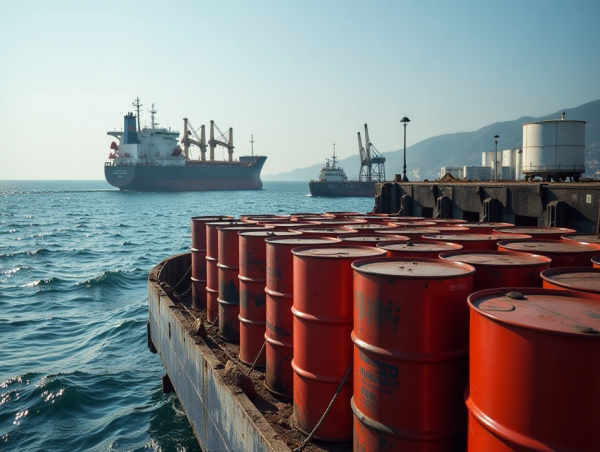To sustain its vital oil revenue amid Israeli attacks, Iran is reportedly maintaining crude oil supplies by loading tankers individually and repositioning its floating oil storage closer to China, according to a Reuters report.
Last week’s conflict between Iran and Israel presents a new challenge for Iran.
Iran employs a “shadow fleet” of tankers to hide the origin of its oil and circumvent U.S. sanctions, which were reimposed in 2018 due to its nuclear program.
China top destination for Iran’s crude
Crude exports from Iran, OPEC’s third-largest producer, predominantly go to China. According to trackers, loadings have largely remained unaffected by the ongoing conflict with Israel.
According to recent data from analytics firm Kpler, Iran has loaded 2.2 million barrels of crude oil per day this week. This figure represents a five-week high in their crude oil loadings.
Missile exchanges between the two countries have targeted energy infrastructure in both nations. This includes Israel’s Haifa oil refinery and Iran’s South Pars gas field. However, Iran’s primary crude exporting facility, Kharg Island, has not yet been hit.
According to Homayoun Falakshai, head of crude oil analysis at Kpler, all loadings from Kharg Island this week occurred at the site’s eastern jetty.
Located in the Persian Gulf, Kharg Island lies approximately 30 km off the southwestern coast of the Middle Eastern nation.
Falakshai stated that Iran’s state oil firm, National Iranian Oil Co. (NIOC), “may believe it is less risky than the other main jetty located on the western side, in open waters.”
Steady exports
Currently, only one large oil tanker at a time is approaching Kharg Island, leaving the second western jetty unused for several days. Additionally, 15-16 other Iranian tankers are dispersed throughout the greater Persian Gulf.
Iranian oil exports have maintained a consistent level of approximately 1.7 million barrels per day throughout the current year, according to a recent assessment by the International Energy Agency (IEA) released on Tuesday.
This steady volume is notable, particularly in light of the US’s imposition of sanctions on Chinese entities involved in purchasing Iranian oil, which came into effect in March.
Despite these punitive measures aimed at curtailing Iran’s oil revenue, Tehran has seemingly managed to sustain its export figures, highlighting the complexities and challenges of enforcing such widespread sanctions in the global energy market.
The IEA’s report underscores the continued demand for Iranian crude, particularly from Asian markets, and raises questions about the efficacy of the existing sanctions regime in significantly impacting Iran’s ability to sell its oil.
Iran repositions fleet
To mitigate potential disruptions for buyers, Iran has repositioned a portion of its 40-million-barrel floating oil storage fleet, comprising 36 vessels, significantly closer to China, the report quoted data from Vortexa.
Vortexa reports that approximately 8 million barrels of Iranian crude, distributed among ten tankers, are now positioned directly offshore China. This fleet has relocated from the Singapore area, where an additional 20 million barrels remain.
The ship-tracking agency further reported that an additional 12 million barrels of oil were in the Persian Gulf at the beginning of the month. However, their current whereabouts are unknown.
Floating storage provides tankers with the flexibility to load crude oil without an immediate fixed destination.
Vortexa’s senior China market analyst Emma Li said:
Iran has been moving these barrels eastwards even without firm orders to strategically place the barrels closer to the end buyers in a time of heightened geopolitical risk.
Vortexa stated that relocating barrels nearer to China would mitigate the effects of as much as two weeks of interrupted Iranian shipments.
The post Resilient Iran maintains oil exports through "shadow fleet" amid conflict appeared first on Invezz





